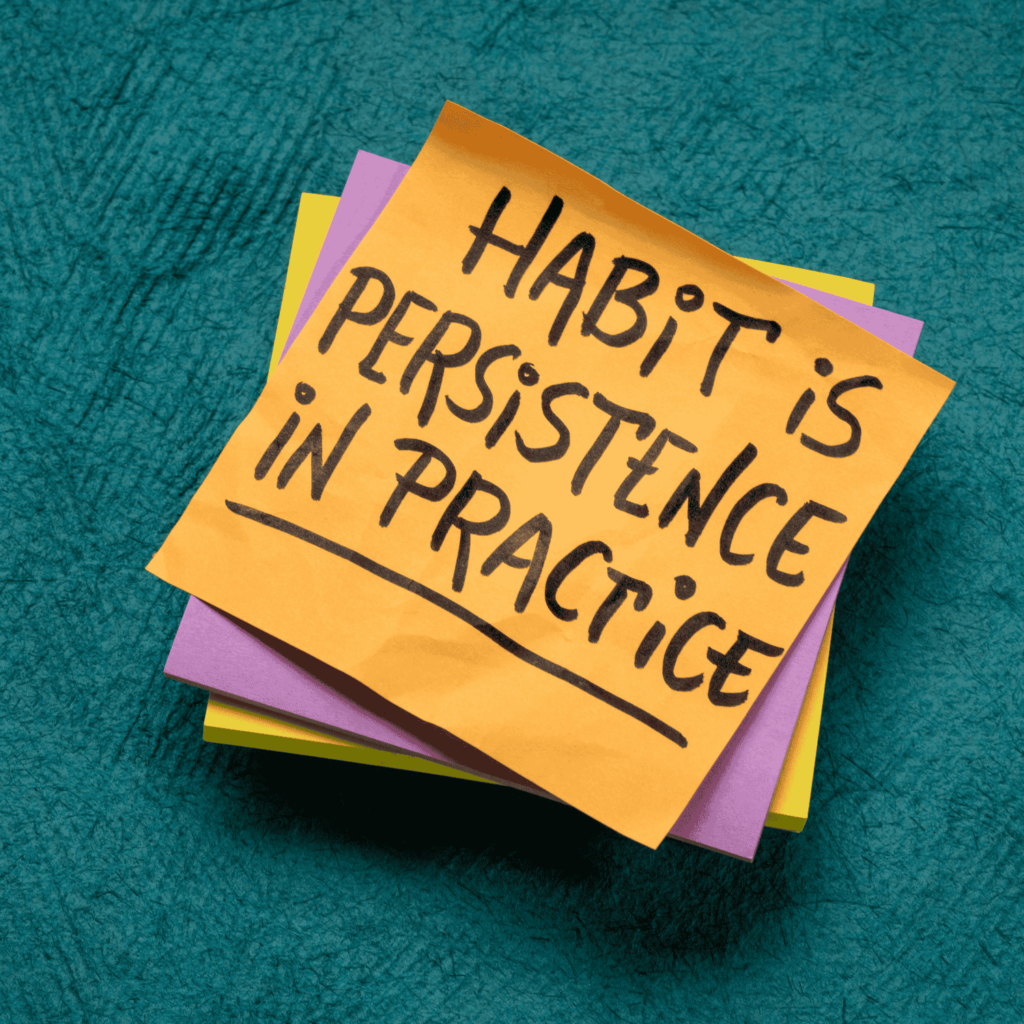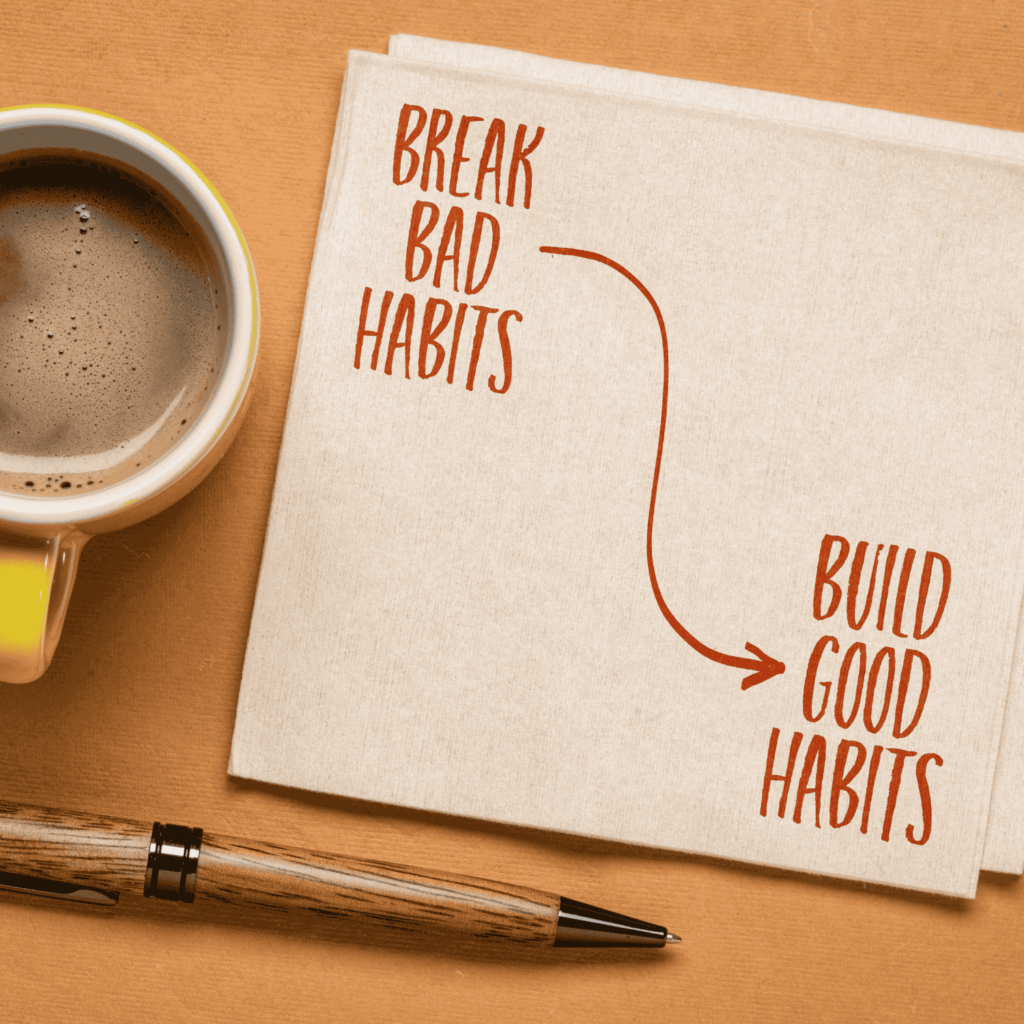
Habits shape much of our daily lives, influencing our choices, productivity, and even overall happiness. While some habits serve us well, like exercising regularly or reading before bed, others can sneak in and do more harm than good. These “bad habits” often appear harmless at first but, over time, can impact our physical health, mental clarity, and general well-being. Breaking them, however, is challenging – they tend to stick around because they’re easy, comforting, or even addictive. But with the right approach, breaking free from bad habits is entirely possible.
Practical Guide to Replacing Negative Habits with Positive Ones
Here’s a practical guide to help you identify, understand, and replace your negative habits with positive, life-enhancing ones.
1. Understand the Habit Loop

Most habits – both good and bad – follow a basic pattern called the “habit loop,” consisting of three parts: cue, routine, and reward.
- Cue: This is the trigger that initiates the habit. It might be something external, like seeing a notification on your phone, or internal, like feeling stressed.
- Routine: This is the actual behavior, or habit, that follows the cue. For example, picking up your phone and scrolling through social media whenever you feel bored.
- Reward: This is the benefit you receive from following the habit, like a sense of relief from boredom or a boost of dopamine when you get likes on your posts.
The cue-routine-reward loop is powerful because it reinforces the behavior, making the habit feel automatic over time. Understanding this loop is the first step to breaking a bad habit because it helps you see where you can intervene. If you can identify the cue, you have a powerful opportunity to reframe the behavior that follows.
2. Identify and Acknowledge Your Bad Habits

Before you can break a bad habit, you need to recognize it fully. Take a few minutes to reflect on your daily routines and pinpoint any habits that might be holding you back. Some common examples include procrastination, excessive screen time, unhealthy eating, negative self-talk, or skipping exercise. Once you’ve identified the habit, write down the impact it has on your life, both positive (like immediate pleasure) and negative (like long-term harm). Being aware of these effects will provide the motivation to change.
Be honest with yourself about why you maintain the habit. If you overeat when stressed, for example, acknowledging that can help you understand that the problem is stress management rather than hunger. Recognizing these deeper reasons helps you target the root cause rather than just the behavior.
3. Set Clear Goals

Goals provide direction and purpose, helping you stay focused and accountable. When setting goals for breaking a bad habit, make sure they’re specific, measurable, and achievable. Instead of a vague goal like “I want to stop procrastinating,” try something more concrete, such as “I will complete my daily tasks by 6 p.m. every day for the next month.“
Break larger goals down into smaller, manageable steps. This makes the goal feel less overwhelming and gives you a sense of progress as you achieve each milestone. For example, if your goal is to reduce screen time, you could start by setting a phone-free zone at the dinner table, then progress to reducing daily screen time by 30 minutes.
4. Replace the Habit, Don’t Just Resist It

Resisting a habit can sometimes make it more enticing, leading to the “forbidden fruit” effect. Instead of focusing solely on what you’re giving up, replace the bad habit with a healthier alternative that satisfies the same need. For instance:
- If you find yourself reaching for junk food when you’re stressed, try replacing it with a healthier snack or going for a short walk to relieve tension.
- If you’re in the habit of scrolling through social media whenever you’re bored, replace that with a quick, productive activity like stretching, reading, or journaling.
By creating a new, positive routine, you satisfy the cue’s trigger without relying on the original, less constructive behavior.
5. Build Accountability and Get Support

Accountability is a powerful motivator. Share your goals with friends, family, or colleagues who can encourage you and hold you accountable. They can provide reminders, celebrate your wins, and help you stay on track when you feel tempted to revert to old habits.
Additionally, consider joining a support group or seeking guidance from a mentor or coach. Sometimes, just knowing you’re not alone in your journey makes a huge difference. Online communities can be great resources as well; for instance, if you’re trying to break the habit of unhealthy eating, joining a wellness-focused group can provide encouragement and helpful tips.
6. Track Your Progress

Tracking your progress is essential for maintaining motivation and seeing how far you’ve come. Use a journal, a habit-tracking app, or a simple calendar where you can mark off each successful day. This not only reinforces the new habit but also helps you stay mindful of any setbacks and learn from them.
If you find yourself slipping back into old habits, don’t be discouraged. Progress isn’t always linear. Use these moments as opportunities to understand what triggered the slip and how you can prevent it in the future.
7. Celebrate Small Wins

Breaking a habit can be a long, difficult journey, so it’s crucial to celebrate your progress, even the small milestones. Each small step forward is evidence that you’re capable of change. Positive reinforcement makes the process more enjoyable and gives you extra motivation to keep going.
For example, if you’ve gone a week without succumbing to the habit, reward yourself with something you enjoy – maybe a nice dinner, a relaxing spa day, or a new book. Small rewards boost your confidence and reinforce the positive changes you’re making.
8. Be Patient and Compassionate with Yourself

Changing habits takes time, and slip-ups are a natural part of the process. Instead of criticizing yourself for every misstep, treat yourself with compassion and patience. Remember, you’re undoing a behavior that’s likely been ingrained for years – this doesn’t happen overnight.
When setbacks happen, don’t let them derail your entire journey. Instead, analyze what led to the slip-up, learn from it, and continue moving forward. Cultivating a growth mindset and viewing setbacks as learning experiences rather than failures will help you build resilience.
9. Embrace the Benefits of Your New Lifestyle

As you break free from bad habits, you’ll likely notice improvements in various areas of your life, from enhanced productivity to better health and self-esteem. Take time to reflect on these positive changes and let them fuel your commitment to the new habits you’re building.
Embracing the benefits also helps you stay motivated in the long term, especially when temptation arises. Over time, as you see the impact of these changes, the old habits will feel less appealing, and the new ones will feel natural and satisfying.
Final Thoughts
Breaking bad habits isn’t easy, but it’s one of the most empowering changes you can make for yourself. By understanding your habits, setting clear goals, replacing negative routines, and staying patient with yourself, you can create a positive shift that will benefit your entire life.
Remember…






